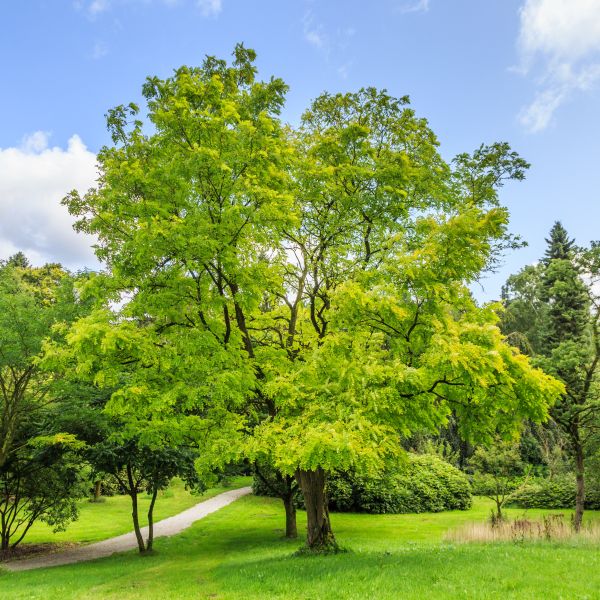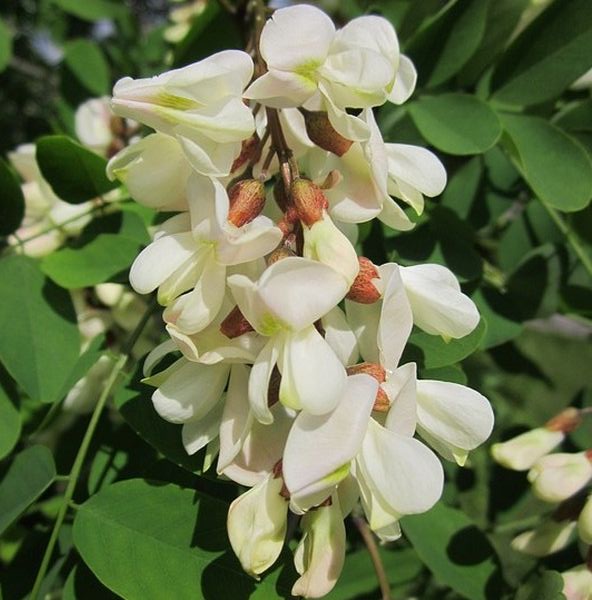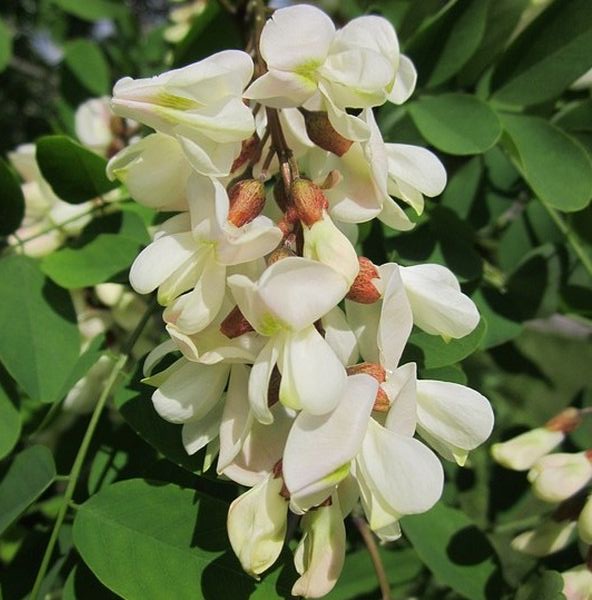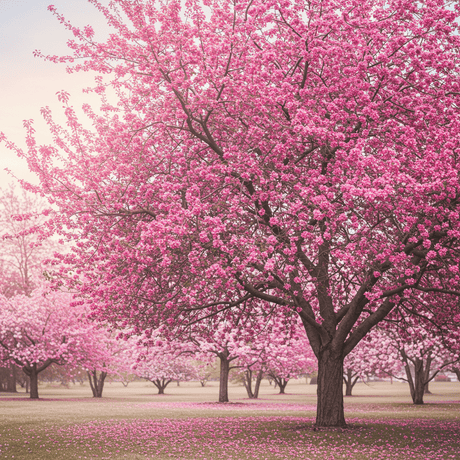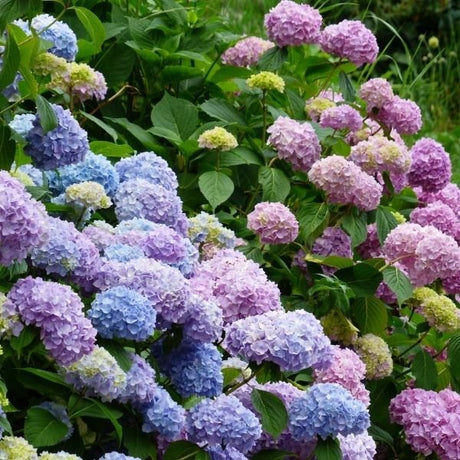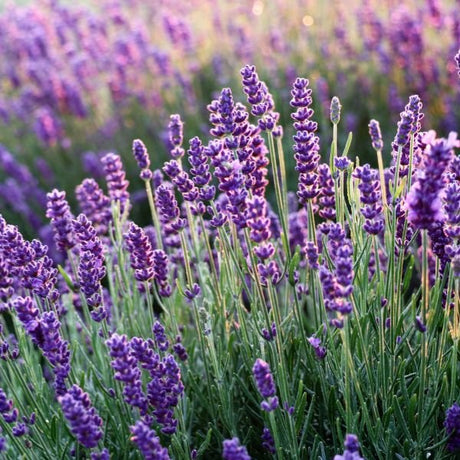Black Locust Tree
Robinia pseudoacacia
- Stay Protected with Plant Sentry ™
Black Locust Tree - #1 Container is backordered and will ship as soon as it is back in stock.
Plant Sentry™
Plant Sentry™

Plant Sentry™ Protected
Your order is protected by our compliance system that:
- Prevents restricted plants from shipping to your state
- Ensures plants meet your state's agricultural requirements
- Protects gardens from invasive pests and diseases
Delivery and Shipping
Delivery and Shipping
Delivery and Shipping
Fast, Safe Plant Delivery
Ships in 3-4 business days • Tracking provided • Weather protected
| Under $50 | $9.99 |
| $50 - $99.99 | $14.99 |
| $100 - $149.99 | $16.99 |
| $150+ | $24.99 |
✓ Zone-specific timing • ✓ Professional packaging • ✓ Health guarantee
Understanding Plant Options
Nature Hills offers plants in two main formats:
- Container Plants: Grown in pots with soil, sized by container volume and plant age
- Bare Root Plants: Dormant plants without soil, sized by height measurements
Container Plant Sizes
Container sizes indicate plant age and growing capacity rather than liquid volume equivalents. Our containers follow industry-standard nursery "trade gallon" specifications, which differ from standard liquid gallon measurements.
Young Plants (6 months to 18 months old)
| Container Size | Actual Volume | Metric Equivalent |
|---|---|---|
| 2" x 2" x 3" | 0.18 - 0.21 dry quarts | 0.20 - 0.23 dry liters |
| 4" Container | 0.31 - 0.87 dry quarts | 0.35 - 0.96 dry liters |
| 4.5" Container | 0.65 dry quarts | 0.72 dry liters |
| 6" Container | 1.4 dry quarts | 1.59 dry liters |
| 1 Quart | 1 dry quart | 1.1 dry liters |
| 5.5" Container | 1.89 dry quarts | 2.08 dry liters |
Established Plants (18 months to 2.5 years old)
| Container Size | Actual Volume | Metric Equivalent |
|---|---|---|
| 2 Quart | 2 dry quarts | 2.2 dry liters |
| #1 Container | 2.26 - 3.73 dry quarts | 2.49 - 4.11 dry liters |
| 5" x 5" x 12" | 3.5 - 4.3 dry quarts | 3.85 - 4.74 dry liters |
Mature Plants (2-4 years old)
| Container Size | Actual Volume | Metric Equivalent |
|---|---|---|
| #2 Container | 1.19 - 1.76 dry gallons | 5.24 - 7.75 dry liters |
| #3 Container | 2.15 - 2.76 dry gallons | 8.14 - 12.16 dry liters |
Large Plants (3-5 years old)
| Container Size | Actual Volume | Metric Equivalent |
|---|---|---|
| #5 Container | 2.92 - 4.62 dry gallons | 12.86 - 20.35 dry liters |
| #6 Container | 5.25 - 6.01 dry gallons | 23.12 - 26.42 dry liters |
| #7 Container | 5.98 - 6.53 dry gallons | 26.34 - 28.76 dry liters |
Bare Root Plants
Bare root plants are sold by height from the root system to the top of the plant. Plants may exceed minimum height requirements.
Common Sizes:
- Trees: 1 foot, 2 feet, 3 feet, 4 feet, 5 feet, 6 feet
- Shrubs & Perennials: 1 foot, 18 inches, 2 feet
Important Notes
Container Volume Specifications
- Trade Gallon Standard: Our containers follow industry-standard "trade gallon" specifications established by the American National Standards Institute (ANSI Z60.1) for nursery stock
- Volume Variations: Actual soil volume may vary due to plant root systems and growing medium settlement
- Age Indicators: Container size primarily indicates plant age and maturity rather than liquid volume equivalents
Growing Conditions
- Plant size can vary based on variety and growing conditions
- Container size helps indicate plant maturity and establishment level
- Larger containers generally mean more established root systems and faster landscape establishment
Seasonal Availability
- Bare root plants are available seasonally when dormant
- Container plants are available throughout the growing season
- Specific varieties may have limited availability in certain sizes
Questions?
For questions about specific plant sizes or availability, please contact our plant experts who can help you choose the right size for your landscape needs.
Plant Highlights
Black Locust Tree highlights at a glance!
-
Botanical Name
-
Brand
-
Growing Zones4, 5, 6, 7, 8, 9
-
Growth RateFast
-
Mature Height
-
Mature Width
-
Flower Color
-
Fall Color
-
Bloom PeriodEarly Spring
Characteristics
Where To Plant
When To Prune
- After Flowering
Water & Moisture Needs
- Widely Adaptable
Sunlight Needs
Soil Needs
- Widely Adaptable
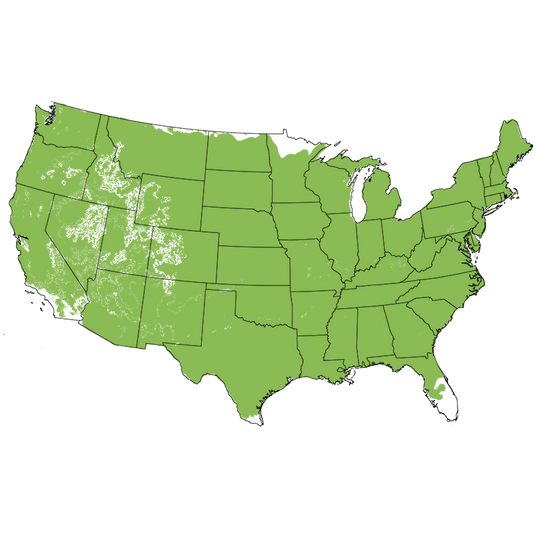
Growing Zones
Farmers, homesteaders, and entrepreneurs take note! This native hardwood tree has many valuable uses as a cash crop, as an edible ornamental (flower fritters!), honey, and gorgeous shade tree! The Black Locust Tree (Robinia pseudoacacia) features white fragrant spring flowers and a fast-growing open, airy canopy is a big bonus!
Native to the Appalachian Mountains of North America, this deciduous tree grows quickly in a wide range of climates, and soil types. As a legume family member, Locust Trees will fix nitrogen in the soil, which helps improve poor soils.
There aren't many trees as tough as this one! Black Locust is so hardy that it will not only tolerate difficult conditions but thrive in them. It's extremely adaptable to almost any soil type. It grows in either wet or dry soils. Try this tree for locations where other trees may have failed. It's tolerant of urban pollution and is drought and cold hardy.
Each spring, the Black Locust produces incredibly fragrant, long, hanging white flowers that look like Wisteria, and smell like heaven. They'll also attract honey bees and hummingbirds.
Handsome foliage quickly fills out to provide dappled shade for the summer months. You can grow warm-season turf right up to the trunk The matte green, wide, rounded leaflets on a pinnately compound leaf turn a pretty yellow in fall. Because each leaflet is small, fall clean-up is a snap!
Planting and Application:
The Black Locust has many applications in the landscape including as a fast-growing shade tree, border plantings, and erosion control. The tree's ability to satisfy these applications quickly makes it highly desirable.
It can also be grown as a cash crop!
Extremely hard wood is great for lumber and flooring planks. Rot-resistant, straight trunks make valuable poles. High-density wood is an ideal material for decks, outdoor furniture fence posts, and other projects that require weatherproof materials. This strength holds up in ice and heavy snow, storms and wind.
Black Locust logs make excellent firewood. They split easily, burn hot, and easily create an effective bed of coals. Grow a stand just for fuel, but be warned! You may go through several chains on your saw cutting these hard trees up. The results will be worth it.
And that's not all!
The delicious honey sourced from Black Locust is commonly referred to as Acacia Honey. It's very light in color and beautifully translucent. Delicate, fruity, floral fragrance and sweet taste add to the appeal. It's a great honey for children over the age of 1 because of the high fructose levels. They'll love that sweet, natural taste!
Why not set up a managed grove of Black Locusts to support beehives? People love buying local honey at Farmer's Markets and online. Use the Locust Tree honey in tea, sweetening food, skincare, and other holistic products.
For managed crops, consider rotating out the trees every 10 years. Coppice firewood trees to the ground.
Don't plant a grove near corrals, barns, or pastures frequented by cattle or horses. Do your research before you consider using Locusts as fodder or mast for deer hunting.
- Beautiful Light Green Oval Leaflets
- Grows Quickly & Low-Maintenance
- Rot Resistant Hardwood & Open Airy Canopy
- Fragrant White Spring Flowers - Fantastic Honey Tree
- Erosion Control, Shade, Specimen & Flowering Ornamental
#ProPlantTips for Care:
Plant native Black Locust Trees in full sun and in well-drained soil of almost any kind. New trees need regular moisture, but once established, Locust trees are drought-tolerant and easy to grow. Prune if needed after flowering to shape young trees.
If used in a home landscape, it's best used as a shade tree with a lawn under it. Plan to mow regularly all around the tree. Regular mowing will help manage this vigorous tree. Otherwise, to help keep the trunk from getting gouged by weed-whackers and mower damage, add a 3-4 inch deep layer of arborist mulch extending out several feet from the trunk.
Nature Hills uses an online database called Plant Sentry™. We follow all federal, state, and local restrictions for sale if this tree is a concern in your area.
- Full Sun Deciduous Trees
- Highly Adaptable to Any Well-Drained Soil
- Moderate to Low Moisture Needs Once Established
- Prune After Flowering
- Incredibly Hardy & Tough as Nails
The Black Locust Tree is a fast-growing, hardy tree with incredible ornamental features. Plant one today and begin enjoying its rare and unique features. Manage it carefully and enjoy the profits from this valuable native plant.


